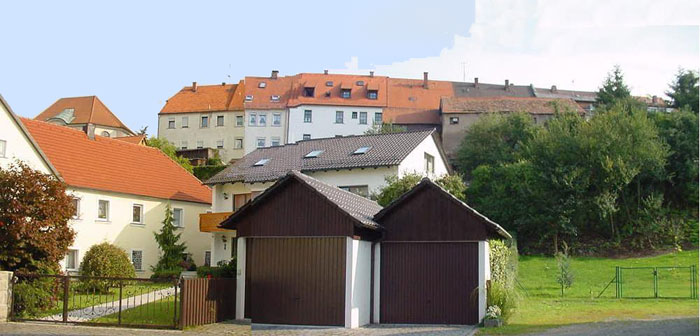Our Steinhardt and Langerman families lived in in the jewish community of Floss Bavaria from the 1600s to the late 1800s and early 1900s.

Below is an extract from Renate Höpfinger, "Die Judendgemeinde von Floss, 1684-1942 : die Geschichte einer judischen" as translated and condensed by Otto Schuett from the history section of the Floss website: http://kehilalinks.jewishgen.org/floss/floss-home.html
"Duke Christian August (1634-1708) [of Sulzbach] studied the Hebrew language and Jewish history. In 1666, with his permission, Jews emigrated to Sulzbach, which soon brought further immigration from the east, thereby developing into a strong community. About 1670, some Jews banished from Vienna requested asylum in Floss. It remains unclear if their application was declined or if they did not make use of their permission."
and
"In 1659, nine Jewish families lived in Neustadt, 14 Jews were traders. In 1684, at the time of the expulsion, there were still 9 Jewish families located in Neustadt. Four of them moved to nearby Floss, where they had already peddled for years. Since Floss was located close to their previous domiciles, they could retain their trading areas. They recognized that Christian August, who had permitted the establishment of a Jewish community in Sulzbach and had set up a Hebrew print shop, had a friendly attitude toward Jews and thus was likely to give them permission to remain in Floss. In 1684, Christian August allowed the brothers Henoch and Hirsch Meier as well as Eisig and Nathan Feifas and their families to settle in Floss."
...
"All of the Jews who came from Floss thereafter were descended from the original four, either directly or by marriage. The laws limited the number of Jews permitted to live in Floss; sometimes these laws were loosely applied and other times people were forced to leave Floss because the numbers were too high.
The Commission of the Greater Main River Area requested all the Jews from Floss to appear for a meeting on April 26, 1814 where Jews were required to take last names. Those who had family names already kept them. (e.g. Bloch, Bomeisler, and Boscowitz ). The others took on German family names. Everybody had to register their names. Before then, each man was known by his name and the name of his father."
According to handwritten family trees that have passed down to their descendants, EIsig Fiefas was the great-grandfather of Isaak Steinhart.
Previous page:
The Lazarus family of Sulzbach
Next page:
The Thannhauser Family

